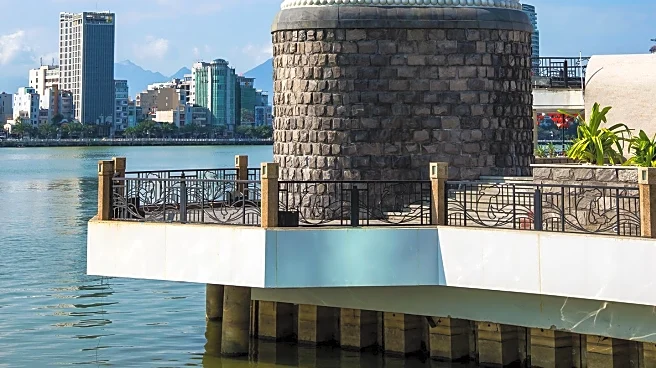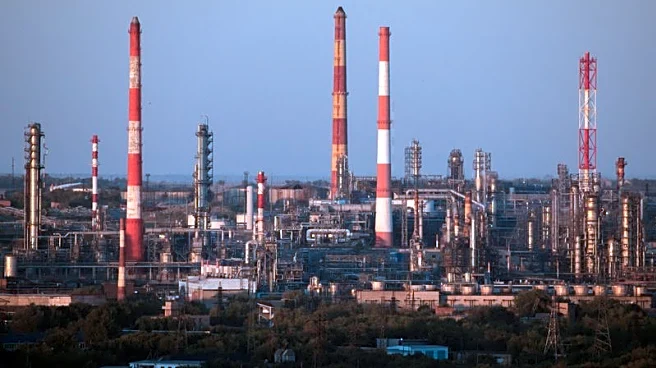What's Happening?
The Nanwang Water Diversion Hub, a critical hydraulic structure along the Beijing-Hangzhou Grand Canal, is undergoing transformation into a regional archeological park. This initiative aims to conserve
and showcase the hydraulic engineering heritage of the canal, which played a pivotal role in water flow regulation and river management during the Ming and Qing dynasties. The site is divided into multiple functional zones, including a core conservation zone, a public archeology experience zone, and a historical environment restoration zone. The transformation is part of a broader effort to preserve the canal's structure and function through scientific restoration and modern management. The hub, known as the 'Water Ridge' of the canal, was originally constructed in 1411 AD and utilized the dredging of three lakes to regulate water volume and ensure smooth waterborne transport.
Why It's Important?
The transformation of the Nanwang Water Diversion Hub into an archeological park is significant for several reasons. It highlights the importance of preserving historical hydraulic engineering achievements, which were crucial for ancient water resource management and transportation systems. By conserving these structures, the project not only protects cultural heritage but also provides insights into ancient engineering techniques that can inform modern water management practices. The initiative also promotes cultural tourism, potentially boosting local economies and increasing public awareness of historical engineering feats. Furthermore, the project underscores the value of integrating historical preservation with contemporary scientific methods to ensure the longevity and educational value of such sites.
What's Next?
The ongoing transformation of the Nanwang Water Diversion Hub into an archeological park will likely involve further scientific restoration efforts to maintain the site's structural integrity. As the project progresses, it may attract increased attention from historians, engineers, and tourists, fostering a deeper appreciation for ancient hydraulic engineering. The development of visitor flow management strategies will be crucial to balancing preservation with public access. Additionally, the project may inspire similar initiatives to preserve other historical sites along the Beijing-Hangzhou Grand Canal, contributing to a broader cultural heritage conservation movement.
Beyond the Headlines
The transformation of the Nanwang Water Diversion Hub into an archeological park raises important ethical considerations regarding the preservation of cultural heritage. It highlights the need for careful management to prevent damage from increased tourism and ensure that restoration efforts respect the site's historical significance. The project also reflects a growing trend towards valuing historical engineering achievements as part of national identity and cultural pride, potentially influencing future policy decisions related to heritage conservation.












